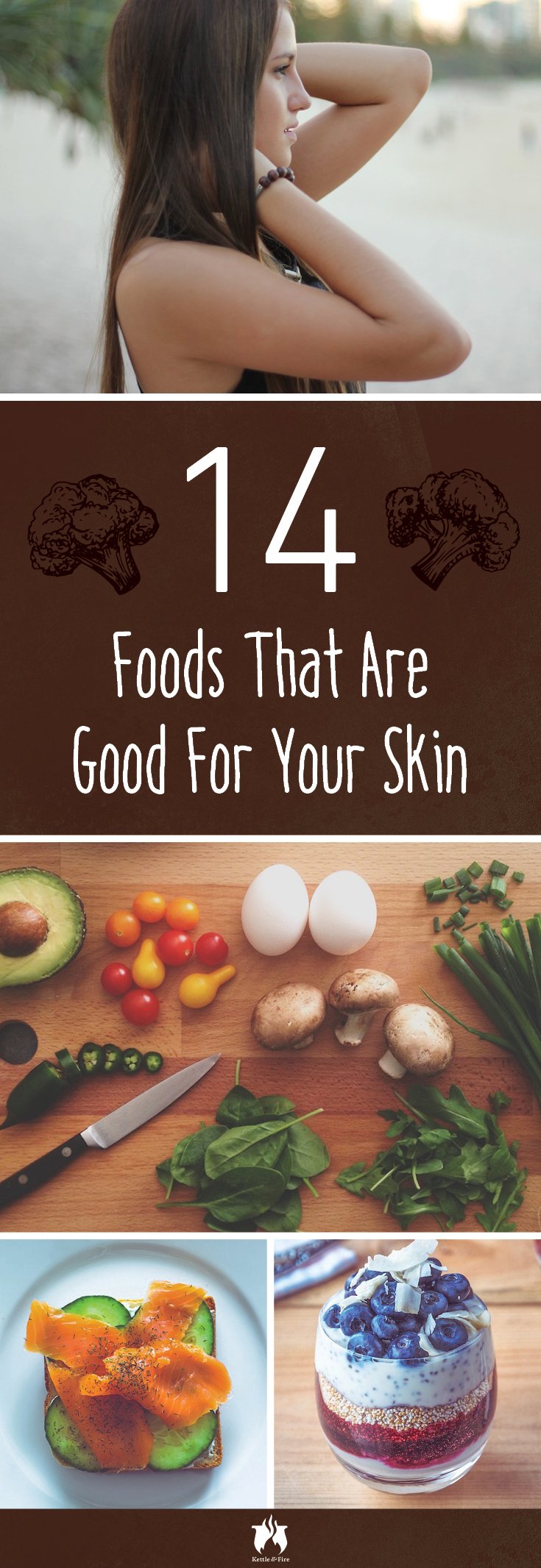14 Foods That Are Good For Your Skin
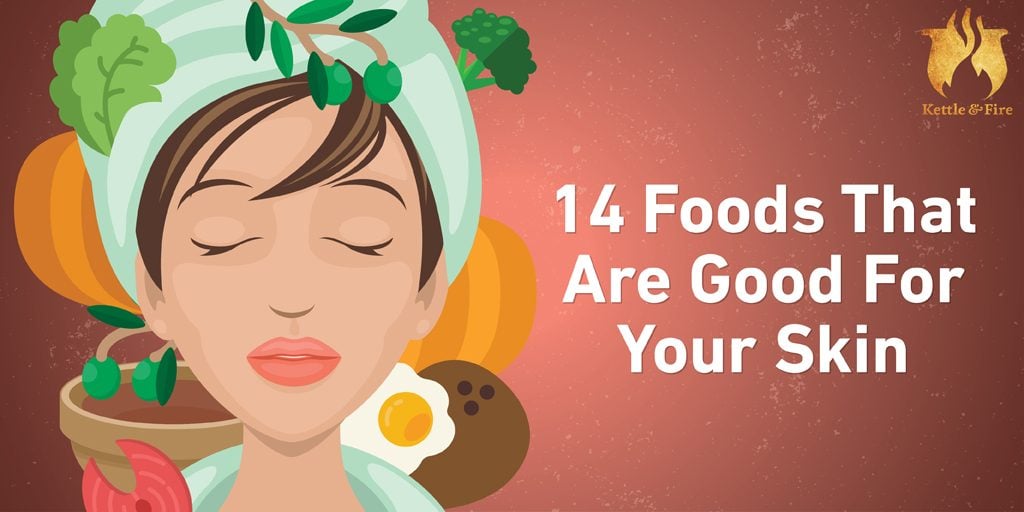
The skin care industry wants us to believe that topical treatments are the best way to achieve clear, younger looking skin. But the truth is, there’s no cream, gel or exfoliator equivalent that can do what a healthy diet does for your skin.
From a holistic perspective, any type of skin condition— such as acne, eczema or premature aging— is a sign of a deeper imbalance in the body. In particular, more research is emerging around the gut-skin access, which shows a direct link between compromised gut health and acne, eczema, and other inflammatory skin conditions (1).
The Gut-Skin Connection
Studies have shown that a lack of healthy gut bacteria, low stomach acid, leaky gut syndrome, SIBO (small intestinal bacterial overgrowth) and candida are all digestive conditions that list acne and other skin disorders as surface symptoms (2).
When your gut is in a weakened state, you may not digest and absorb essential nutrients for skin health as efficiently. And let’s be honest: you are only as healthy as the nutrients you absorb. If your skin isn’t being nourished with the healthy fats and antioxidant vitamins required for collagen production and healthy skin cells, not only are you at risk for essential nutrient deficiencies, but you may experience fine lines and wrinkles much sooner than you’d anticipated.
Your Skin’s Role in Natural Body Detoxification
As the largest organ of elimination, your skin also acts as “backup” for your liver when it’s overburdened with toxins to eliminate. When toxins start being eliminated through your skin rather than you digestive system, they have the potential to manifest as rashes, pimples or blackheads.
Rather than getting rid of a blemish with a spot treatment cream, it’s much more effective to prevent and reduce the severity of breakouts in the long-term by adding foods that support your body’s natural detoxification processes to your diet.
With this in mind, the best foods for your skin are those that help improve your gut health, and contain vitamins, minerals and other nutrients that help support your organs of detoxification. Here are the top 14 foods to eat for clear, glowing skin.
14 Foods That Are Good For Your Skin
There’s definitely a pattern to this list: you’ll notice most of the following foods are high in fiber, which helps detox the body naturally by “sweeping” waste from the digestive tract. Fiber is also essential for promoting regular bowel movements, which is key for safely eliminating toxins that destroy your skin and gut health.
Despite having fiber in common, all of these foods have unique properties for boosting skin health. Let’s take a look at what those are, and the best way to regularly include these foods in your diet.
Broccoli
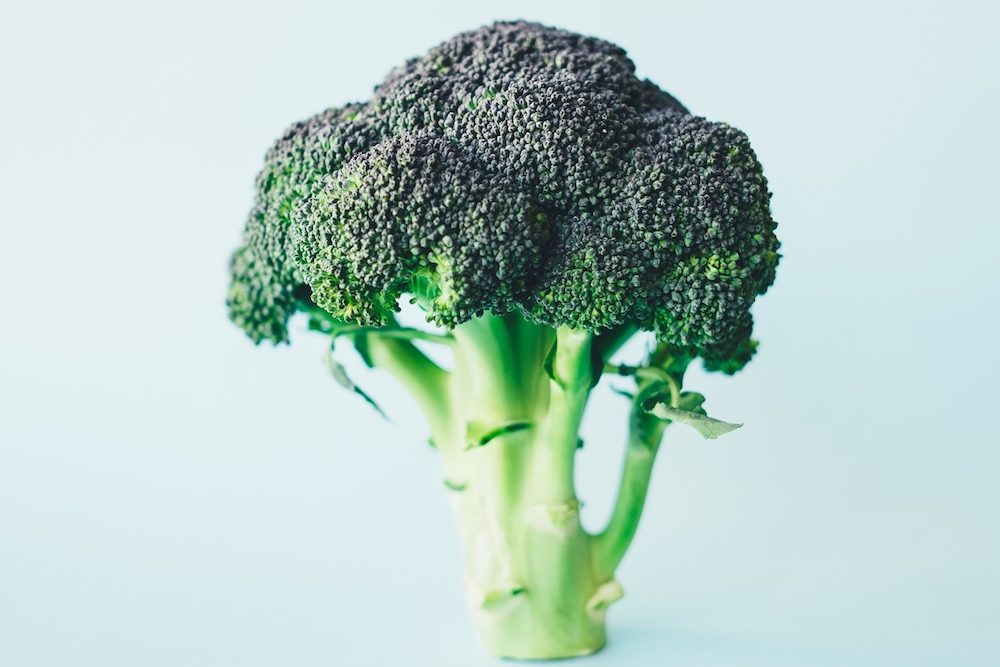
If you suffer from cystic acne or experience breakouts around hormonal changes, broccoli may be the superfood your skin’s been waiting for.
In addition to being rich in detoxifying fiber, broccoli contains a compound called Indole-3-Carbinol (I3C), which is found in many cruciferous veggies.
Indole-3-Carbinol has been shown to help correct hormonal imbalances that play a role in acne, such as excess estrogen (3). In fact, low progesterone or excess estrogen can lead to a condition called estrogen dominance, which can cause inflammation, and is commonly seen with cystic acne (4).
I3C “blocks” estrogen, and prevents excess estrogen from being produced in the body, leading to fewer hormonal breakouts and clearer skin. Hormonal imbalances commonly occur from taking oral contraceptives, but diets rich in processed foods, stress and genetics can also play a role (5).
How to Eat More Broccoli:
Broccoli doesn’t have to be a bland, boring side dish. You can add broccoli to your smoothies and fresh pressed juices, and swap regular sprouts for broccoli sprouts on salads. I personally recommend making a “skin supportive” soup with steamed broccoli, kale and cauliflower— all of which contain I3C— and blending with your favourite herbs and bone broth.
Chlorella
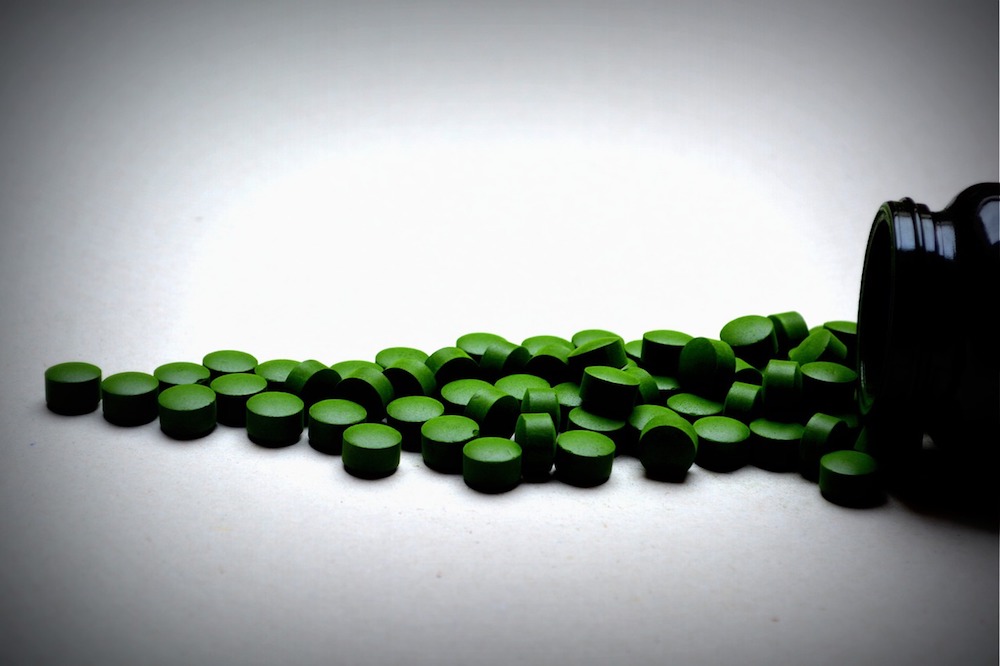
Chlorella is a green algae that promotes clear skin in numerous ways, thanks to a nutrient it contains called Chlorella Growth Factor, or CGF.
CGF is rich in the nucleic acids RNA and DNA, which give the body “instructions” on the functions it needs to carry out— including cellular repair and regeneration. As you can guess, the quicker your skin cells repair and regenerate, the healthier your skin will look and feel. This is especially important when it comes to wound healing, or healing fresh scars.
As suggested by the name, Chlorella Growth Factor can’t be found in any other food besides chlorella— which is why it’s superior to other types of algae when it comes to improving your skin health.
Chlorella also contains beta-carotene, the precursor to vitamin A, which has been shown to stimulate collagen production and prevent premature aging, and is also rich in fiber to support digestion and detoxification (6).
How to Eat More Chlorella:
Chlorella can be taken as a whole food nutritional supplement or used as a powder in your favourite smoothies, juices and raw food recipes.
Note: In order to be digested by the body, chlorella must have a broken cell wall. Always be sure to look for “broken cell wall” chlorella that’s been processed without using excessive heat or harmful chemicals which damage chlorella’s delicate nutrients.
Bone Broth
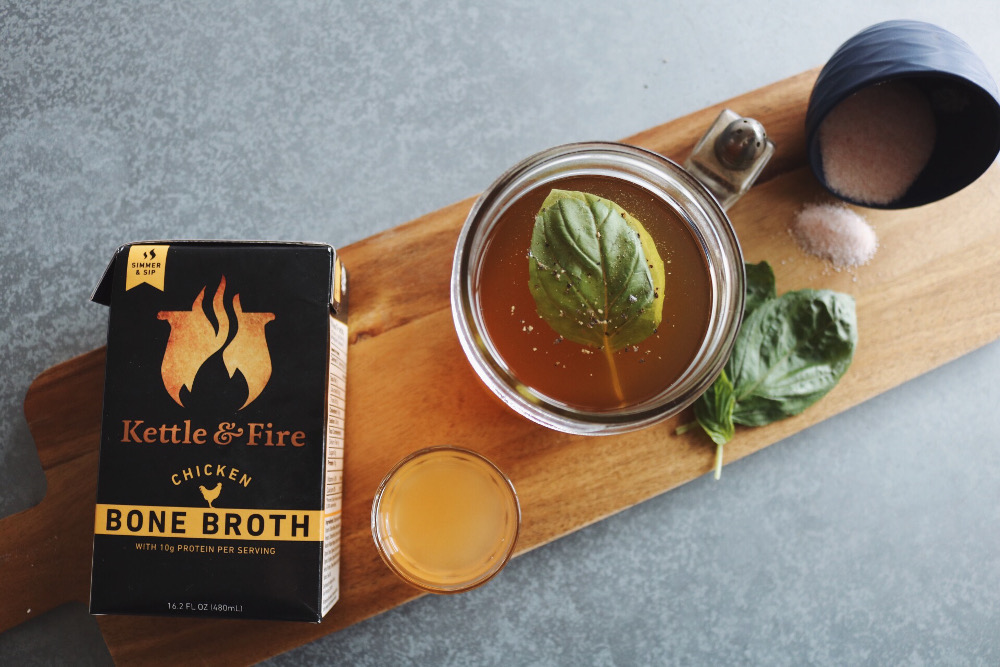
Bone broth: better than botox?
Bone broth is the best dietary source of collagen on the planet, which plays an important role in both skin and gut health. While collagen is well known for keeping skin’s elasticity and maintaining a plump, soft appearance, it also helps seal and repair the gut lining, which can reduce digestive conditions such as leaky gut (7).
(So yes, bone broth is better than botox in our humble opinion.)
How to Eat (or Drink) More Bone Broth:
The conventional way to use bone broth may be in a soup or stew recipe, but why not add it to any recipe that calls for liquid? You can swap water for bone broth in egg dishes, as a meat marinade, stuffings, casseroles, smoothies, and noodle dishes (homemade Ramen for healthy skin, anyone?).
And hey, what’s wrong with trading in your morning cuppa for a warm mug of bone broth? Having bone broth first thing in the morning will not only give your skin and gut a massive boost of nutrition, but provide you with all-day energy (without the jitters) based on the abundance of amino acids, vitamins and minerals it contains.
We recommend making bone broth a part of your healthy lifestyle and here’s our guide on how to drink bone broth. Hope you find it helpful.
Organic Eggs
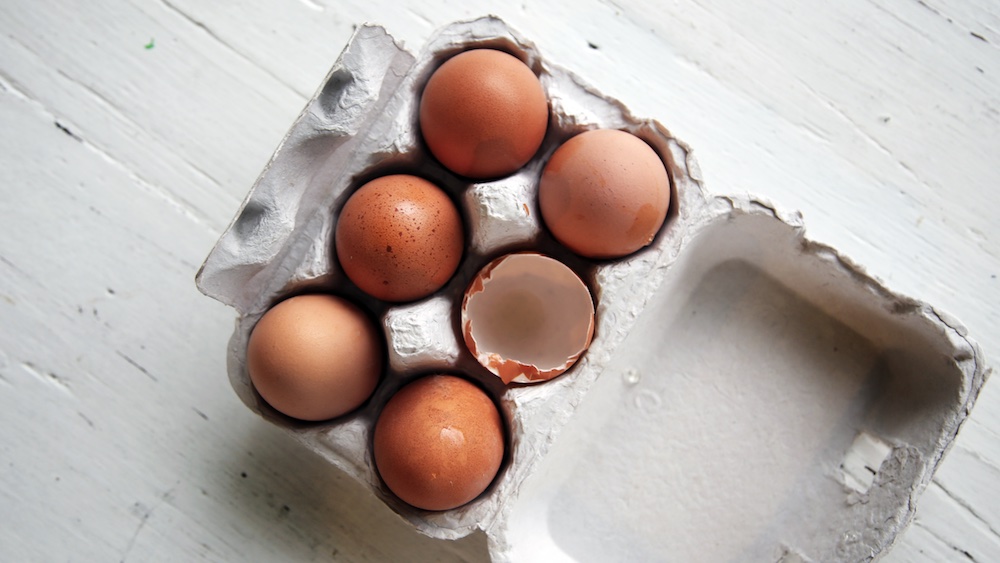
Eggs can benefit your skin in numerous ways with certain amino acids they contain, such as L-histidine. Histidine acts as an antioxidant and helps prevent free radical damage to the skin from toxins. Histidine may also provide UV protection, which is why it’s considered a helpful amino acid for preventing skin cell damage (8).
Although it’s rare for foods to actually contain collagen (most foods contain nutrients that help the body synthesize collagen), chicken egg yolks are one of the only other food sources aside from bone broth to contain it (9).
Horsetail
Horsetail is a plant that’s been used for hundreds of years to improve the skin’s appearance because it’s rich in a mineral called silica.
Silica has been shown to improve skin health because it helps the skin retain moisture, which is important for a smooth, youthful appearance. Silica forms compounds called glycosaminoglycans, which make up the skin’s connective tissue and bind to water molecules in the skin to prevent moisture loss (10).
One glycosaminoglycan you may be familiar with is hyaluronic acid, which can be found in many anti-aging skin injections, as well as costly skin creams and treatments. But you can save your dollars and increase your body’s hyaluronic acid production naturally simply by eating silica rich foods. In addition to horsetail, you can find silica in oats, burdock root, leafy greens, nopal cactus and almonds.
How to Add Horsetail to Your Diet:
Horsetail can be taken as a nutritional supplement in the form of capsules, extracts, teas or tinctures.
Dark Leafy Greens
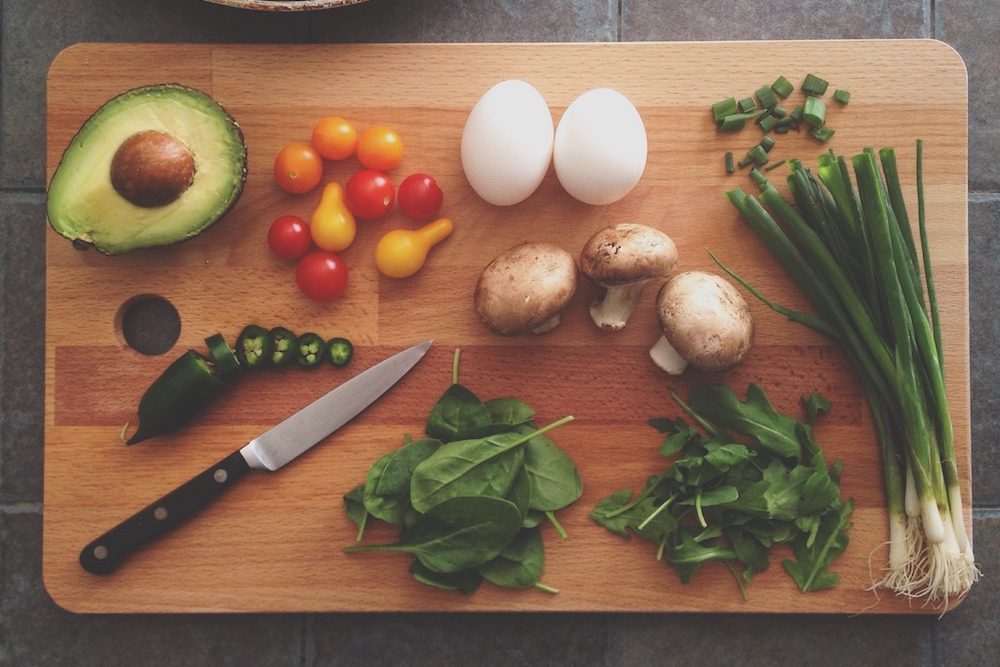
Dark leafy greens get their green color from a pigment called chlorophyll, which happens to be one of the most powerful detoxifiers on the planet. It’s been shown to help the body eliminate heavy metals such as mercury and cadmium, which get stuck in our tissues and can cause skin irritation and conditions (11).
By improving detoxification, chlorophyll also helps reduce inflammation and promotes digestive health. And as we remember: the better your gut health is, the brighter and healthier your skin will be, too.
How to Eat More Leafy Greens:
Blending leafy greens into a green smoothie allows you to triple the amount of greens you get in your diet. Adding a banana, your favourite nut milk and some organic almond butter also masks the earthy taste of the greens, and allows you to cram in more of the good stuff.
Cilantro
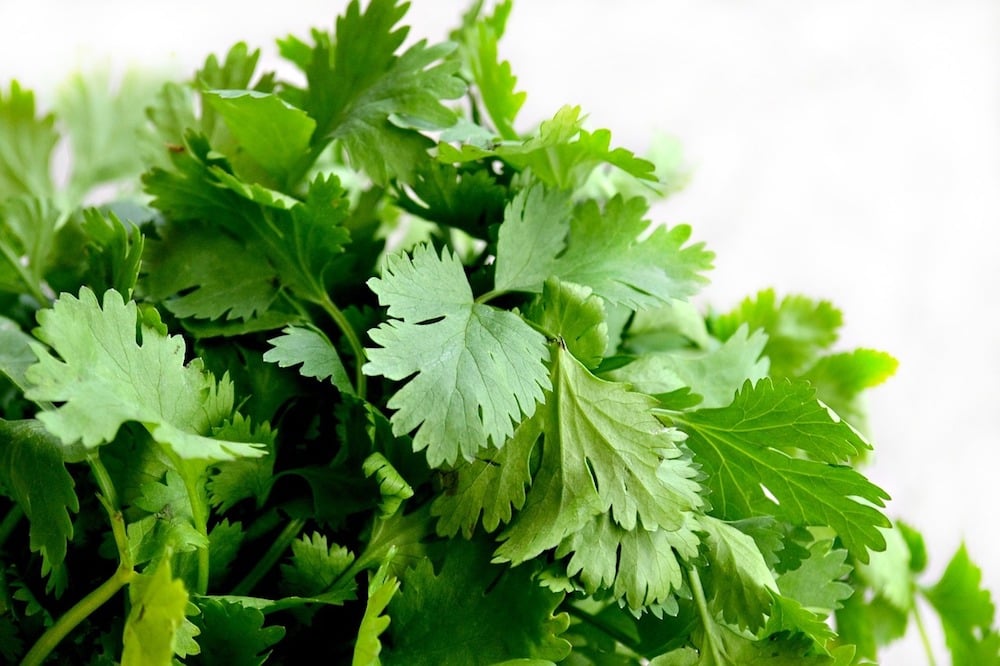
Just like dark leafy greens, cilantro can promote detoxification and benefit the skin because it contains chlorophyll. However, cilantro may support phase II liver detoxification, which is the phase where your liver is getting ready to eliminate toxins from your body (12). As mentioned above, liver support is crucial for preventing acne-causing toxins from being eliminated through your skin and causing breakouts.
How to Add Cilantro to Your Diet:
The strong taste of cilantro isn’t everyone’s cup of tea, so if you prefer not to include it in your recipes, you can always take cilantro in the form of nutritional supplements. Otherwise, load up cilantro in your guacamole, salads, soups and even smoothie and fresh pressed juice recipes.
Coconut Oil
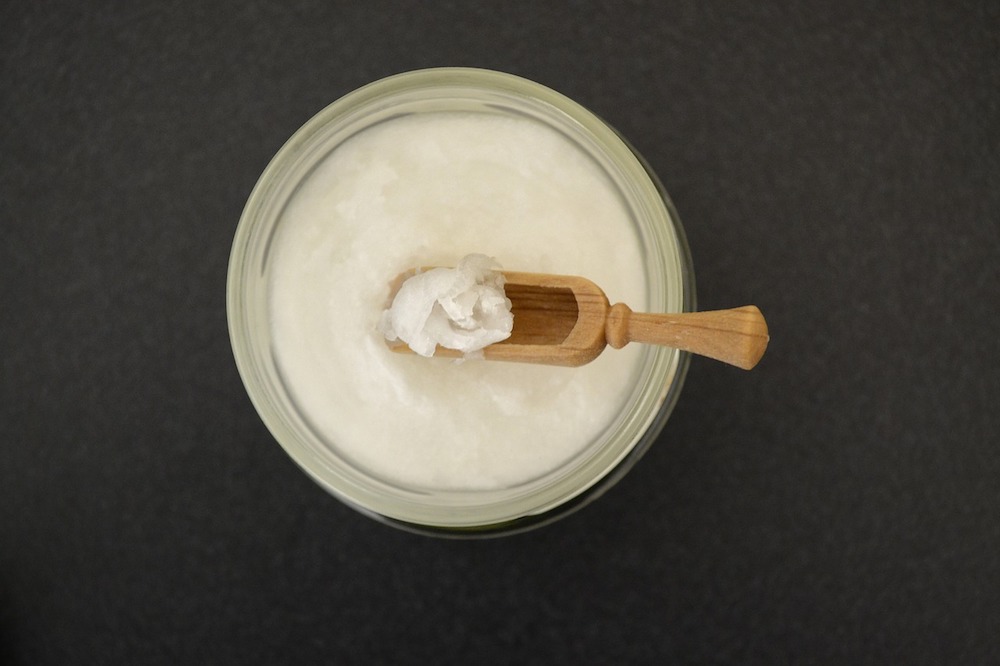
Coconut oil is one of the “natural beauty” ingredients you can both apply topically to your skin, and eat to improve your skin’s appearance from the inside out.
Coconut oil contains a fatty acid called lauric acid, which has antibacterial properties that may prevent acne breakouts. Lauric acid is also a natural antifungal, which can help kill harmful pathogens in the digestive tract that destroy gut health, such as yeast (13).
When it come to using coconut oil on your skin, it makes a great body moisturizer and chemical-free eye makeup remover. If you have acne prone skin, you may want to avoid putting coconut oil on your face, as it has the tendency to clog pores.
How to Add Coconut Oil to Your Diet:
The better question here may be: how do you not add coconut oil to your diet? Aside from being a healthy cooking fat (which is safe to use on high temperatures), you can put coconut oil in your tea, coffee, smoothies, baking recipes, soups and homemade desserts. Personally, I’ll eat coconut oil on it’s own by the spoonful.
Olive Oil
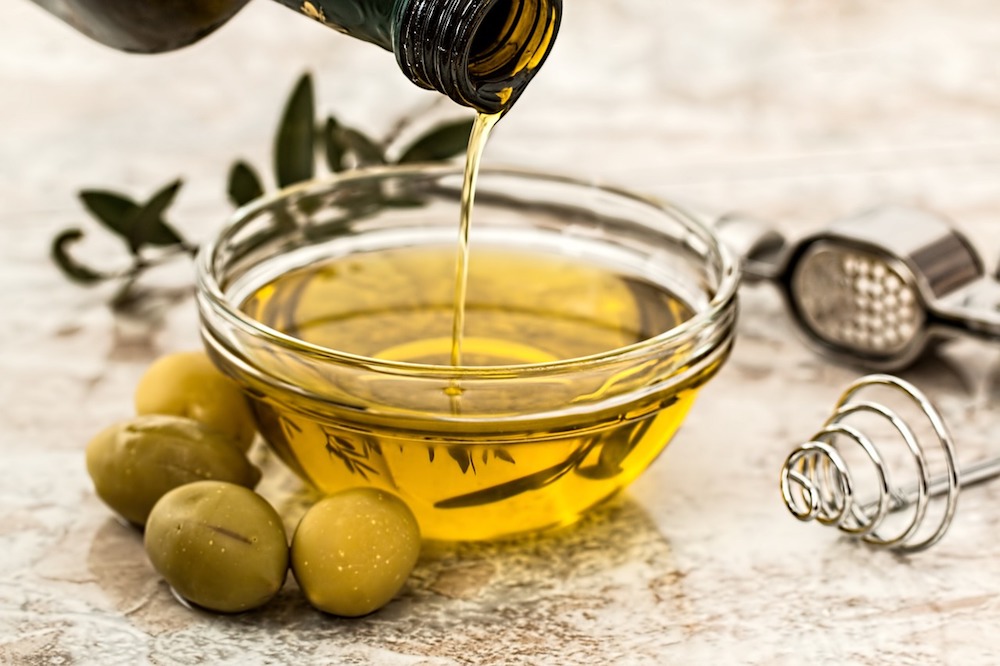
Olive oil is said to be one of the oldest natural remedies for improving skin health. In fact, I’ve heard of friend’s Italian grandmother’s who’ve sworn by dabbing olive oil onto their skin every night to prevent fine lines and wrinkles.
The monounsaturated fatty acids in olive oil have been shown to protect against free radical damage (a major cause of premature aging), and studies have further shown protective benefits against sun damage with an increased dietary intake of monounsaturated fats (14).
How to Eat More Olive Oil:
The delicate healthy fats in olive oil are sensitive to high temperatures, so the best way to ensure you absorb them is by adding them to lukewarm or cooler dishes, such as salads or homemade salad dressings. You can cook with olive oil, but always be sure to keep the heat on low.
Celery
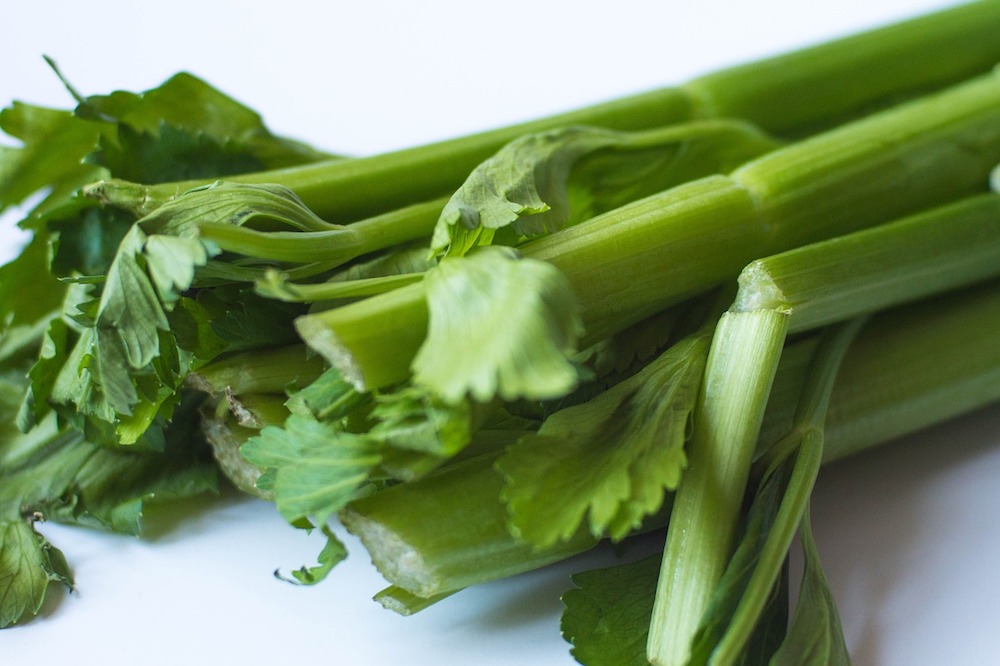
Celery is an amazing skin food because of its high fiber and high water content. Now, we’ve mentioned that moisture is key for keeping skin looking plump and youthful, which is why staying hydrated is one of the best ways to improve the appearance of your skin. Aside from drinking your water, you can also hydrate from eating high water content veggies, too.
In addition to fiber, celery also contains a gut and skin supportive nutrient called lutein, which is said to be protective against colon cancer (15).
How to Eat More Celery:
Natural remedies for acne recommend drinking celery juice first thing in the morning to clear up skin. You can try blending celery with water and a splash of lemon as a homemade clear skin tonic, or add celery to your green smoothies for an extra boost of fiber. If you get the craving for something crunchy, celery also makes a great snack when topped with organic cashew or almond butter.
Raw Cacao Powder
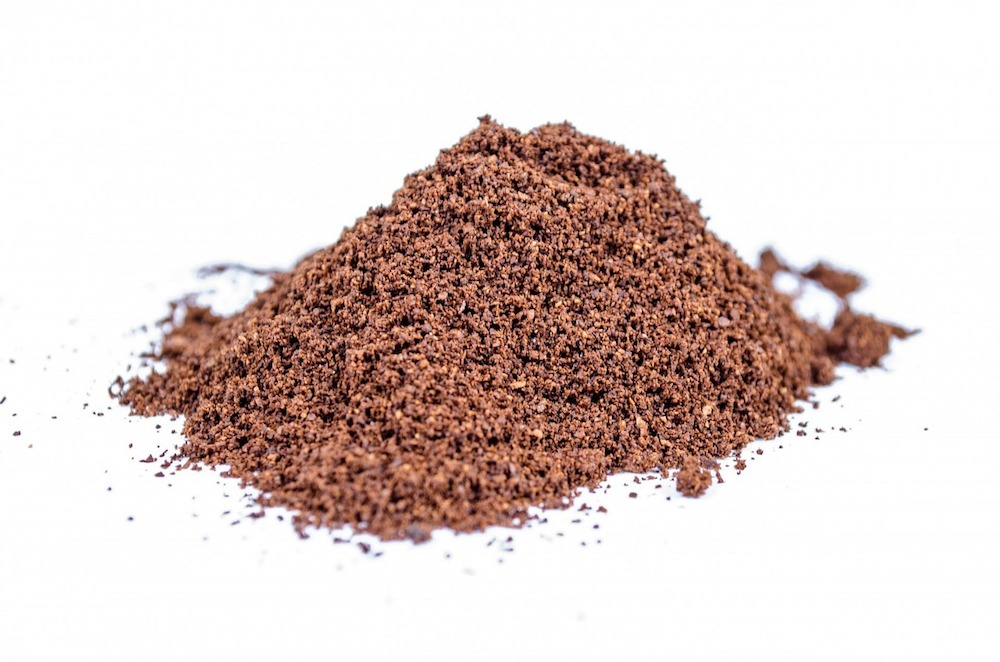
Raw cacao is the type of chocolate you want to be eating when it comes to improving your skin. Cacao is a rich source of flavanols, which are phytonutrients that have been shown to improve skin elasticity and protect against UV exposure (16). While the benefits of raw cacao powder will be noticed most by ingesting it, you can also apply raw cacao powder to your skin topically by making a homemade face masks by mixing it with water, and other ingredients such as clay and chlorella.
How to Eat More Raw Cacao Powder:
Homemade “healthy skin” chocolate, anyone? You can make chocolate at home using raw cacao powder and coconut oil, and add raw cacao powder to your smoothies and baking recipes. You can also use raw cacao powder to make healthy hot chocolate or mochas with your favourite nut milk and a touch of natural sweetener, such as green leaf stevia.
Pumpkin

Pumpkin is rich in beta-carotene, which is the precursor to vitamin A, or retinol. Many OTC topical skin creams use derivatives of vitamin A (such as retinoids) to help stimulate new skin cell production, eliminate acne and fade dark acne scars. As you can guess, eating food sources of beta-carotene will provide these same benefits, but in a more powerful way by healing from the inside out.
Beta carotene is the pigment that gives orange and red plant foods their colors, so yellow and orange peppers, squash, yams and carrots provide benefits for the skin, too.
How to Add More Pumpkin to Your Diet
Don’t count on Starbucks pumpkin spice lattes for providing beta carotene. Instead, add pumpkin to your homemade stews, soups and chilis. Pumpkin also makes a delicious protein smoothie when combined with vanilla protein powder, cinnamon, nutmeg, vanilla extract and almond milk.
Wild Salmon

Wild salmon is an excellent source of omega 3 essential fatty acids, which are the building blocks for healthy skin cells, and also help the skin retain moisture and prevent dryness. Healthy fats also improve gut health by acting as a “lubricant” for the GI tract, which promotes bowel regularity and prevents the skin-damaging toxins from accumulating in the body.
We recommend choosing wild salmon over farmed salmon to avoid the hormones and antibiotics found in farmed fish, which act as toxins and worsen skin health. Other fatty fish such as mackerel and sardines are also good sources of omega 3’s.
How to Eat More Wild Salmon:
Why not get creative and dress up your salmon with other clear skin ingredients, such as cilantro and lemon? A homemade pesto would also be a great addition to salmon, since basil contains the detoxifying nutrient, chlorophyll.
Fermented Foods and/or Probiotic Supplements
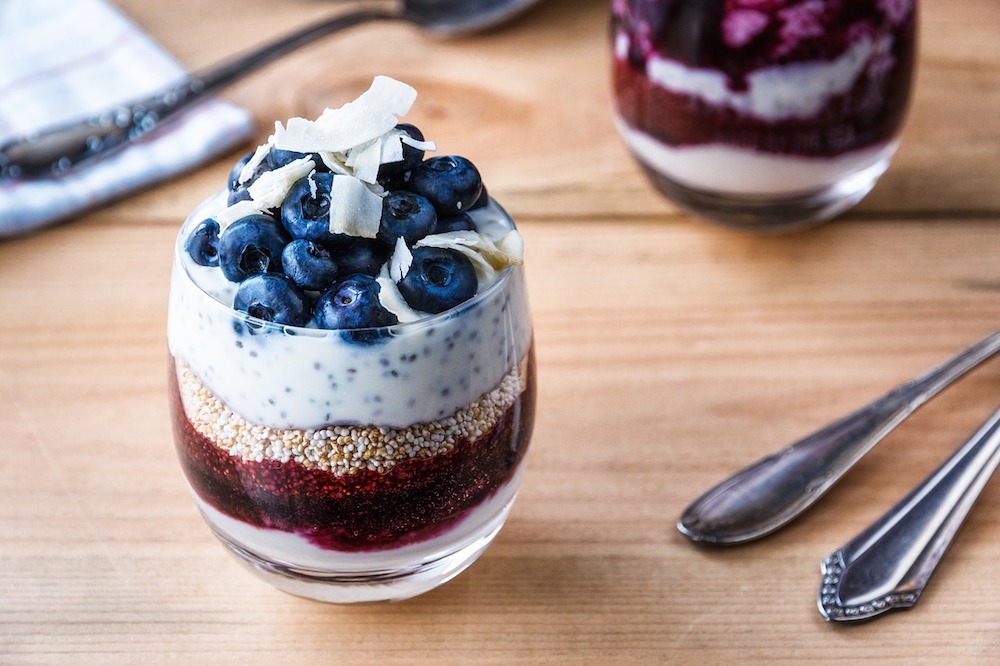
Fermented foods may be last on this list, but it’s certainly not the least important. Fermented foods contain strains of healthy bacteria, or probiotics, which are the most important nutrient when it comes to gut health. Probiotics prevent the overgrowth of bad bacteria and other harmful pathogens, and help support the body’s natural detoxification and elimination process.
From what we understand about the relationship between the gut and the skin, we can assume that probiotics benefits for the gut directly translate to the skin. This is why many anti-acne and skin-care protocols will recommend taking a probiotic supplement and eating probiotic foods in the first stages of healing.
How to Add Fermented Foods to Your Diet:
We recommend choosing dairy-free fermented foods, such as coconut yogurt and coconut milk kefir, beet kvass, sauerkraut and tempeh. Dairy is a common food sensitivity for many people and conventional dairy products contain hormones, which should be avoided not only for clearing up and maintaining the appearance of your skin, but for improving your overall health (17).
As you can see, healthy skin is simply a byproduct of a healthy body. By eating a diet rich in nutrients that improve your overall health, such as antioxidants, healthy fats and fiber, youthful, glowing skin is only one of the benefits you’ll experience.
